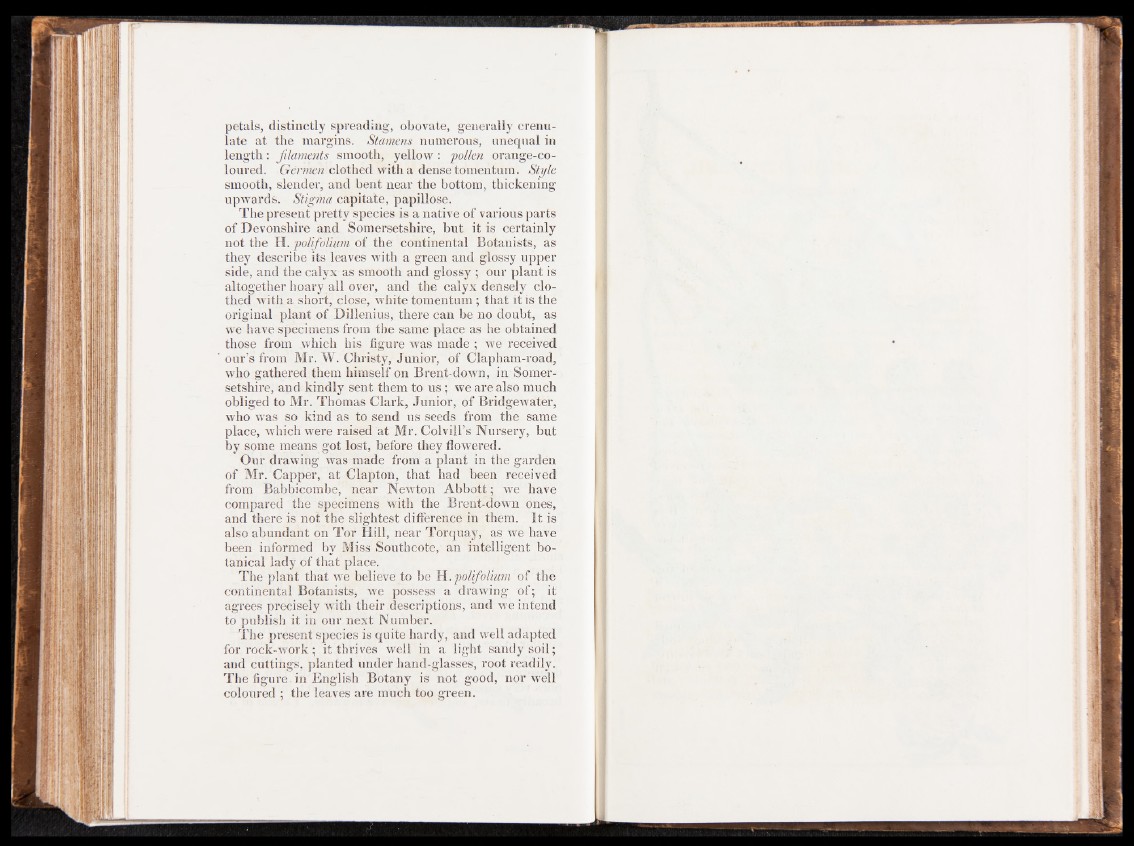
petals, distinctly spreading, obovate, generally crenu-
late at the margins. Stamens numerous, unequal in
length: filaments smooth, yellow : pollen orange-coloured.
Germen clothed with a dense tomentum. Style
smooth, slender, and bent near the bottom, thickening
upwards. Stigma capitate, papillose.
The present pretty species is a native of various parts
of Devonshire and Somersetshire, but it is certainly
not the H. polifolium of the continental Botanists, as
they describe its leaves with a green and glossy upper
side, and the calyx as smooth and glossy ; our plant is
altogether hoary all over, and the calyx densely clothed
with a short, close, white tomentum ; that it is the
original plant of Dillenius, there can be no doubt, as
we have specimens from the same place as he obtained
those from which his figure was made ; we received
our’s from Mr. W. Christy, Junior, of Clapham-road,
who gathered them himself on Brent-down, in Somersetshire,
and kindly sent them to us ; we are also much
obliged to Mr. Thomas Clark, Junior, of Bridgewater,
who was so kind as to send us seeds from the same
place, which were raised at Mr. Colvill’s Nursery, but
by some means got lost, before they flowered.
Our drawing was made from a plant in the garden
of Mr. Capper, at Clapton, that had been received
from Babbicombe, near Newton Abbott; we have
compared the specimens with the Brent-down ones,
and there is not the slightest difference in them. It is
also abundant on Tor Hill, near Torquay, as we have
been informed by Miss Southcote, an intelligent botanical
lady of that place.
The plant that we believe to be H.polifolium of the
continental Botanists, we possess a drawing of; it
agrees precisely with their descriptions, and we intend
to publish it in our next Number.
The present species is quite hardy, and well adapted
for rock-work; it thrives well in a light sandy soil;
and cuttings, planted under hand-glasses, root readily.
The figure in English Botany is not good, nor well
coloured ; the leaves are much too green.